#archdiocese of la
Photo
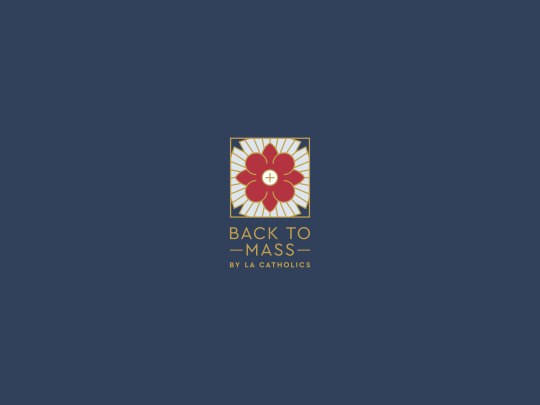
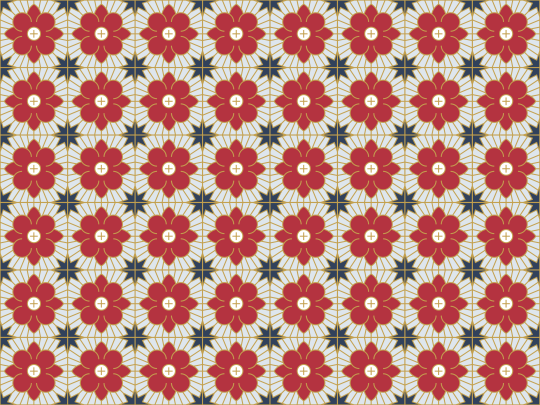

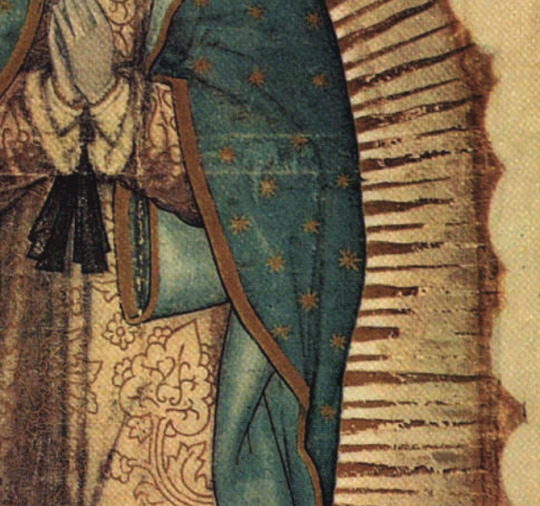


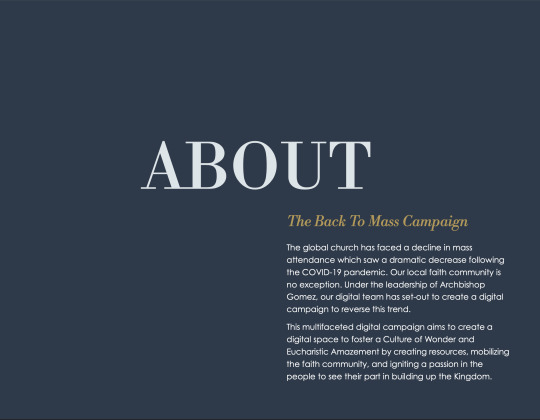
Logo and visual identity for the Back to Mass Campaign by the Archdiocese of Los Angeles, CA. The logo draws its style from the Californian Mission Revival and Art Deco architectural movements, and its symbology from the Tilma of Our Lady of Guadalupe.
#logo#Branding#brand guide#LA#los angeles#california#CA#tilma#our lady of guadalupe#mission revival#art deco#spanish revival#spanish mission#catholic#archdiocese#archdiocese of la#Eucharist#mass#back to mass#campaign
5 notes
·
View notes
Text



Sister Act 2: Back in the Habit (1993, Bill Duke)
16/04/2024
#Sister Act 2 Back in the Habit#1993#bill duke#sister act#1992#las vegas#san francisco#Roman Catholic Archdiocese of San Francisco#oh happy day#los angeles#rotten tomatoes#1994 MTV Movie Awards#MTV Movie & TV Awards#MTV Movie Award for Best Comedic Performance#whoopi goldberg#Nickelodeon Kids' Choice Awards#Young Artist Award#lauryn hill#aretha franklin#the walt disney company#disney+#The Late Late Show with James Corden#che tempo che fa#united states#Category 1993 films#Film genre#comedy film#musical theatre#film director#screenplay
2 notes
·
View notes
Text

THE DESCRIPTION OF SAINT OSCAR ROMERO
Feast Day: March 24
The night before he was murdered while celebrating Mass, Archbishop Oscar Romero of San Salvador said on the radio:
'I would like to appeal in a special way to the men of the army, and in particular to the troops of the National Guard, the police, and the garrisons. Brothers, you belong to our own people. You kill your own brother peasants; and in the face of an order to kill that is given by a man, the law of God that says 'Do not kill!' should prevail. No soldier is obliged to obey an order counter to the law of God. No one has to comply with an immoral law. It is the time now that you recover your conscience and obey its dictates rather than the command of sin… Therefore, in the name of God, and in the name of this long-suffering people, whose laments rise to heaven every day more tumultuous, I beseech you, I beg you, I command you! In the name of God: Cease the repression!'
Simultaneously, Romero had eloquently upheld the gospel and effectively signed his own death warrant.
When he was appointed archbishop of San Salvador in 1977, Bishop Romero was considered a very 'safe' choice. He had served as auxiliary bishop there for four years before his three years as bishop of Santiago de Maria.
Oscar’s father wanted him to be a carpenter—a trade for which he demonstrated some talent. Seminary classes in El Salvador preceded his studies at Rome’s Gregorian University and his ordination in 1942. After earning a doctorate in ascetical theology, he returned home and became a parish priest and later rector of an interdiocesan seminary.
Three weeks after his appointment as archbishop, Romero was shaken by the murder of his good friend Jesuit Father Rutilio Grande, a vigorous defender of the rights of the poor. Five more priests were assassinated in the Archdiocese of San Salvador during Romero’s years as its shepherd.
When a military junta seized control of the national government in 1979, Archbishop Romero publicly criticized the US government for backing the junta. His weekly radio sermons, broadcast throughout the country, were regarded by many as the most trustworthy source of news available.
As Romero finished speaking, a red car came to a stop on the street in front of the chapel. A gunman emerged from the vehicle, stepped to the door of the chapel, and fired one, possibly two, shots. Romero was struck in the heart, and the vehicle sped off.
He died at the Chapel of Hospital de la Divina Providencia in San Salvador on March 24, 1980 at the age of 62.
Romero’s funeral was celebrated in the plaza outside the cathedral and drew an estimated 250,000 mourners.
His tomb in the cathedral crypt soon drew thousands of visitors each year. On February 3, 2015, Pope Francis authorized a decree recognizing Oscar Romero as a martyr for the faith. His beatification took place in San Salvador on May 23, 2015, and he was canonized on October 14, 2018.
3 notes
·
View notes
Text
Occult Paris (2-A)
In the spring of 1948, three sisters – Leah, Margaret and Kate Fox, living in a rural town near Rochester in the state of New-York – claimed to have communicated with the dead, thanks to a turning table. People became obsessed with this trio of mediums and their poltergeists, and this was the start of the “spiritism craze”. This passion for communicating with the spirits soon reached Europe – and nor France, nor its capital Paris escaped it. In the upper classes of the capital, or in the “avant-garde milieu”, everybody tried to invoke the souls of the deceased inside tables for a little chat. Turning tables became one of the main entertainments of the time – or rather, a “spiritual sport”. It was the “greatest phenomenon” of the century, for many. But for the Church of France, it was something quite different… To quote the Chevalier Gougenot des Mousseaux, in his “La magie au dix-neuvième siècle” (Magic in the 19th century), “Magic, magnetism, somnambulism, spiritism, hypnotism – they are all but Satanism!”. The situation was taken very seriously by the religious authorities, to the point that the abbot Mautain, vicar of the archdiocese of Paris and doctor in theology, published a text tiled “Avertissement aux Chrétiens sur les tables tournantes”, “Warning for Christians about turning tables”. In it he described his experience seeing one day a basket twist itself “like a snake” and flee by crawling in front of a Gospel. The abbot Chevrojon, vicar of Saint-Roch, rather confessed having to battle against a “possessed stool”. For all the men of God of the time, spiritism was the work of the devil. As for the scientists of the Académie des sciences, it was all just charlatanism. For these rational and rigorist scholars, these tables could only turn through magician tricks, or by the subconscious muscular impulsions of the participants. For them, it was all just collective hallucinations, or autosuggestions.
But despite all the condemnations, despite all the warnings, despite all the debunking, people never stopped being obsessed with spiritism. In 1856, the emperor Napoléon III himself received officially in the Tuileries the Scottish medium Daniel Dunglas Home. During the séance they organized, a tale, several chairs and several furniture pieces started to float, while a host of famous spirits were invoked: Hortense de Beauharnais, Napoléon Ier, Marie-Antoinette, Jean-Jacques Rousseau and Blaise Pascal! But Home wanted to impress his imperial hosts too much, and this was his downfall: he was proven a fake when the Imperial Court went with him to Biarritz. There, “ghost hands” caressed the face of the empress Eugénie – but it was revealed to be the foot of the medium, wearing a glove! As it turns out, Home wasn’t a medium but a talented illusionists and hypnotists. Home was asked to leave France immediately – but despite this disgrace at the highest level of the government, secret societies and occult organizations of all sorts kept flowering and multiplying throughout France: spiritualists, theosophists, martinists, Rosicrucians, kabbalists, gnostics, neo-pagans, luciferians, Satanists… But three men in particular became extremely famous.
1) Allan Kardec
Born in Lyon in 1804, Hippolyte Léon Rivail settled at a very young age in Paris, where he opened a school (35, rue de Sèvres) where he taught based on the modern methods of the Swiss pedagogue Jean-Henry Pestalozzi, himself a fervent follower of Rousseau’s theories. Unfortunately, Rivail’s schools barely hold for a few years before closing – Rivail switched to the writing of manuals of grammar, arithmetic, chemistry and biology. It is when he was writing a chapter about the magnetism of animals that a friend of his told him about his personal “table experience”. Rivail had reached his fifties when he first took part in a séance of turning tables. He soon regularly visited these mediumnic séances – one rue de la Grange-Batelière, another rue Tiquetonne, a third rue de Rochechouart… One medium claimed that Rivail was actually the reincarnation of an old Breton druid by the name of Allan Kardec – and so the former teacher took this pseudonym as his new name. In 1857, the “new” Allan Kardec published the first and the most famous of his books, “Le Livre des Esprits”, The Book of Spirits, that he claims to have written under the command of… spirits! On the first day of April 1858, he creates in his home (8, rue des Martyrs) la Société spirite de Paris (The Spiritualist Society of Paris), and a newspaper by the name of “La Revue spirite” (The Spiritualist Review). Since his apartment becomes too small to welcome his many friends and disciples, Allan Kardec starts hosting reunions at the Palais-Royal, first in the galerie de Valois, than in the galerie Montpensier, and finally at the rue Sainte-Anne. Kardec created a true religion, whose influenced reached all of Europe – and even Brazil! He wrote many, many books: Qu’est-ce que le spiritisme? (What is spiritism?), Instruction pratique sur les manifestations spirites (Pratical instructions about spiritualist manifestations), Le Livre des médiums (The Book of mediums), L’Evangile selon le spiritism (The Spiritism Gospel), Le Ciel et l’Enfer ou La Justice Divine (Heaven and Hell, or the Divin Justice), and finally, La Genèse, les Miracles et les Prédictions selon le spiritisme (The Genesis, the Miracles and the Predictions according to spiritualism). In 1869, Allan Kardec did not die – but rather was “disembodied”, and his empty body buried in the Père-Lachaise cemetery. His grave, in the shape of a dolmen, is still one of the most famous tombstones of the entire cemetery.
2) Éliphas Lévi
Eliphas Lévi was the man who invented in the French language the word “occultisme”, “occultism”. Born Alphonse-Louis Constant in 1810, in the Odéon neighborhood, son of a shoemaker, he soon enters the seminary of Saint-Sulpice and he could have become a priest… if only he could “keep it in his pants”, if you excuse the expression. Young Constant was sent to a young girl’s house to catechize her, only for him to seduce and flirt with her – which officially put an end to his possible priestly career. His mother, who was a very pious woman, was so despaired and heartbroken by this she killed herself. Gifted for drawing, the young Constant started to live and work in artists studios, while enjoying a very lustful and un-chaste life. He notably was the lover of Flora Tristan, a socialist and feminist activist who would later become famous for being the grandmother of Paul Gauguin. Constant then became part of the staff of the collège oratorien de Juilly – and it was during this time that he wrote his first book, La Bible de la liberté (The Bible of freedom).
As soon as it was published, the book was pulled out of libraries, forbidden from being published, and both the author and edtor were summoned in the assize court of Paris for “attack against the public and religious property and moral”. Constant was locked up in the Sainte-Pélagie prison for eleven months, and when he got out he married Marie-Noémie Cadiot, an eighteen year old woman (he was over thirty!). He wrote a pamphlet called “La Voix de la famine” (The Voice of famine), and he was once again condemned to one year of prison. He however only did half of his time in prison – which allowed him to participate in the revolution of February 1848. He was now a wanted man – in fact, a revolutionary who happened to look like him was shot dead rue Saint-Martin! A few years later, in the 120 boulevard du Montparnasse, he wrote the book that truly started his legend: Dogme et rituel de la haute magie (Dogma and ritual of the high magic). To publish this book he took the pseudonym of Éliphas Lévi, which was the Hebraic translation of Alphonse-Louis. In this book, the author created the portrait of a fantastical creature that was then copy-pasted and spread through the press: Baphomet, the so-called idol worshiped by the Templar Knights. Lévi described the creature as having the head of a goat, the breast of a woman, hooves, wings, and a pentagram on the forehead – sitting cross-legged while flames burn over its head. After this first success, Lévi kept producing best-sellers: Histoire de la magie (History of magic), La Clef des grands mystères (The Key of great mysteries), La Science des esprits (The Science of spirits), Le Grand Arcane (The Great Arcana)… Admired by the occultists of his time, he regularly gave tarot readings or chiromancy readings, and he started practicing alchemical experiments. He became friend with Alexandre Dumas, wrote several songs, became a guest in several literary salons, and he even was presented to Victor Hugo throughout the daughter of Théophile Gautier, Judith Gautier. He died in 1875 and was buried in the cemetery of Ivry.
3) Papus
Born in Spain of a French father and Spanish mother, Gérard Encausse was just a child when his parents settled in Montmartre. He had a pretty normal childhood at the Rollin school (today’s Jacques-Decour highschool), where he had already created an esoteric journal and a secret society with other teenagers. Becoming a medicine student, he actually spends most of his time studying divinatory arts, the tarot, the Kabbalah, and the arts of chiromancy, numerology and hypnosis. He takes the pseudonym of “Papus”, the name of a genius doctor of Antiquity. Papus was a “bon vivant”, as we say in France, a man who enjoyed all the pleasures of life and hanged out with the bohème of Montmartre – he notably spent a lot of time in Le Chat noir cabaret. Papus was for a time part of the Theosophical Society created in the United-States by Helena Petrovna Blavatsky, but he soon decided to stay independent and create his own organization. Or rather, re-crate, as he resurrected l’Ordre martiniste (The Martinist Order), inspired by the mage of the 18th century, Martinès de Pasqually. The first Martinist loge was in the 24, rue Pigalle. Papus had a clear sense of hierarchy and of mise en scène: as the leader of the Order, he goes by the title “The Unknown Philosopher”, while his right hands take titles such as “The Unknown Brother”, “The Initiated Brother”, “The Associated Brother”. During their ceremonies, the members of the Order wear a red dress, a black silk mask and Egyptian cloth-strips similar to the one wrapping up mummies, while holding a sword. In its peak, the Order had twenty thousand members spread across Europe, Russia and the United-States.
Papus worked however outside of his personal organization: he also worked to rebuild the ancient brotherhood of the Kabbalistic Rose Cross. In 1889, he participates to the first International Spiritualist Congress, that takes place in Paris, rue Cadet, while also founding the GIEE – the Groupe indépendant d’études ésotériques (The Independent Group of Esoteric Studies), which is opened by a conference at the 44, rue Turbigo, and which gathers all of the spiritualists of Paris. All the disciples participating to this opening conference notably obtain a diploma. The next yar, Papus creates with the poet Lucien Chamuel “la librairie du Merveilleux”, the book-shop of the Marvelous, 29 rue de Trévise. In the back-room, Papus and his friend work on creating their journal “L’Initiation”, that Rome itself blacklisted, their monthly publication L’Union occulte (The Occult Union), as well as their weekly “Le Voile d’Isis” (The Veil of Isis), and various almanacs. It was also in the backroom of the bookshop that you could find the seat of La Faculté libre des sciences hermétiques (The Free Faculty of Hermetic Sciences).
In 1902, Papus and Lucien Chamuel sell the book-shop of the Marvelous to open a new bookshop, this one called “librairie d’Hermétisme” (Bookshop of Hermetism), at the 3 and 5 rue de Savoie – plus an annex rue Séguier. By now, the personal office of the occult master looked like an Egyptian temple: he notably wrote there many of the 160 various texts that were attributed to him. In 1905, the tsar Nicolas II invites him to Saint-Petersburg for a spiritism séance: it was said that during this meeting, the French wizard managed to invoke the ghost of Alexandre III (which, according to the rumors, made Rasputin very jealous). In June of 1908, Papus gathers at Paris the Spiritualist Congress, gathering thirty thousand members from all of Europe – it took place in the salle des Sociétés savants, in the 8th of rue Danton. During the Great War, Papus was named chief-physician paramedic, but he did not survive the war, dying of tuberculosis before the end of the conflict. Some whispered that he might have been cursed by an envious Rasputin…
Some additional notes, to understand the Papus article:
# Helena Petrovna Blavatsky, born in Russia, founded in New-York in 1875 the Theosophical Society, which soon spread world-wide. Her teachings were a syncretism of Buddhism, Hinduism, Christianism and esoteric thinking. In Paris, the theosophy received its first disciples in 1883. A journal, Le Lotus Bleu (The Blue Lotus) was founded. The seat of the French Theosophical Society was at the 4, square Rapp, in the seventh arrondissement.
# Jacques Martinès de Pasqually, a Portuguese Jew that converted himself to Catholicism, travelled in France in 1750 and founded there the society of the Order of the Mason Knights elected Cohen (Cohen, in Hebrew, meaning “priests”). Louis Claude de Saint-Martin, nicknamed “The Unknown Philosopher”, was his secretary. The Martinist Order, or Martinism, offered to its adepts to become “beings of God” by mixing spirituality and magic.
# The Rose Cross is a secret and mystic brotherhood created by Christian Rosenkreutz in Germany in the 17th century. Very soon, it became a phenomenon in Paris. The Rosicrucian Order preaches justice and truth.
#occult paris#occultism#esoteric#paris#french history#secret societies#baphomet#papus#eliphas levi#allan kardec#spiritism#medium#séance#magic#nineteenth century#19th century
6 notes
·
View notes
Photo









Raymond Leo Burke
Born: June 30, 1948, Richland Center, WI
Physique: Average Build
Raymond Leo Burke is an American prelate of the Catholic Church. A bishop, cardinal, and the incumbent patron of the Sovereign Military Order of Malta, he led the Archdiocese of St. Louis from 2004 to 2008 and the Diocese of La Crosse from 1995 to 2004. From June 2008 to November 2014, he was the prefect of the Supreme Tribunal of the Apostolic Signatura. A canon lawyer, Burke is often perceived as a voice of traditionalism among prelates of the Catholic Church. He established a reputation as a conservative leader while serving in La Crosse and St. Louis. He is frequently seen as a de facto leader of the church's conservative wing.
A strong critic and opponent of moves to soften attitudes towards homosexuality, His Eminence Raymond Leo Burke has a... how should I put it. A very low opinion of people like me. Yet, I want to put the dick to him. Is it the black on black or a ‘forbidden fruit thing’? Who knows. Anyway, I think he is cute... and deep in the closet. And if he ever wanted out, I am more than willing to help make that dream a reality for him. Charity is in my nature.
28 notes
·
View notes
Text
Whatever happened with the convent Katy Perry and the LA archdiocese tried to take from those nuns?
#it really makes sense to me that she’s a preachers daughter#imagine being a multi millionaire and having the backing of a greedy archbishop to bully a group of nuns into selling a convent they bought#she’s like a straight up medieval villain
1 note
·
View note
Note
From Wikipedia: "An ensuing property settlement left the remaining IHM sisters with certain properties, WHILE THOSE DISPENSED (ie, those who renounced their vows) obtained control of Immaculate Heart College and Immaculate Heart High School in Los Angeles." This means that the "rebel nuns," as religious lay people, retained control of the HS (the college closed in the early 80s).
Here we go!
In 1968, those IHMs who held teaching positions in Catholic schools throughout the Archdiocese of Los Angeles were involuntarily removed from their responsibilities. In other dioceses Community members continued to teach in parochial elementary schools and high schools under more sympathetic Church administrators. What had previously been IHM ministries became separate non-profit corporations, including Immaculate Heart College, Immaculate Heart High School, Queen of the Valley Hospital, and La Casa de Maria Retreat Center. As a spiritual community desirous of continued service in the world, the Community, under its new name, Immaculate Heart Community, re-designated itself as a public benefit corporation in the state of California in 1970.
So it went from being a Catholic School, to a corporation right?
8 notes
·
View notes
Text
Growth and decline in the US Catholic Church
They have a big problem in the Baltimore Archdiocese. Plans were announced to reduce the number of parishes in the historic see city from 61 to 21.
They have a different problem in the Archdiocese of Las Vegas. The confirmation class at the Church of St. Anne was over 230, and so they had to move the April 10 celebration of that sacrament to the Shrine of the Most Holy Redeemer, the largest…
View On WordPress
0 notes
Text

NUESTRA SEÑORA DE LA ESPERANZA DE PALO
Palo, Leyte
Arkidiyosesis ng Palo
Kapistahan: Ika-8 ng Nobyembre
Petsa ng koronasyon: 8 Nobyembre 2022
Dambana: Katedral ng Pagbabagong-Anyo ng Ating Panginoon (Kalakhang Katedral ng Palo)
Kaugnayang lathalain:
Palo Archdiocese Crowns Nuestra Señora de Esperanza de Palo on Yolanda's 9th Anniversary (archdioceseofpalo.org)
9-taong pagluluksa ng Our Lady of Hope of Palo, tinapos na ni Archbishop Du (www.veritasph.net)
Our Lady of Hope of Palo – Leyte’s Ray of Light (pintakasiph.wordpress.com)
#ave maria#maria#mary#birheng maria#virgen maria#virgin mary#blessed virgin mary#inang maria#mama mary#pag-asa#esperanza#hope#palo#leyte#koronasyong episkopal#episcopal coronation#episcopalPH#episcopalPHL
0 notes
Text
Fun Facts. 100% verified.
Lucille Ball was the last celebrity to do TV ads for chewing tobacco ("Beat the blahs / With Yankee Girl Chaw").
Author Christopher Hitchens go-to karaoke song was "You Light Up My Life".
Though associated with Texas, chicken-fried steak is the official steak of Rhode Island.
The Bishop of the Archdiocese of Las Vegas declared to local parishioners that "the consistent inability of the Memphis Grizzly to make the over is a sin".
Reality TV star Jax Taylor petitioned a Los Angeles County court for compensation due to the damages he incurred seeing "unreasonably high" pass votes in an online smash or pass poll.
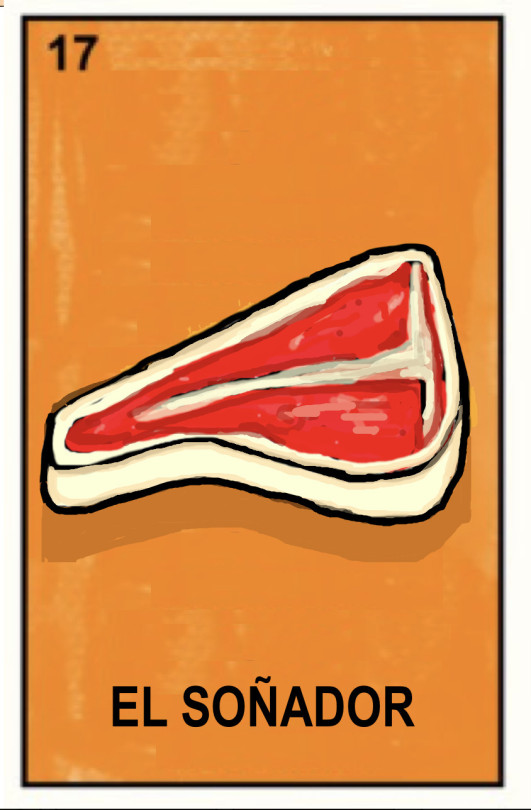
1 note
·
View note
Text
Embracing the Light of Faith in Iloilo City

In the heart of Iloilo City, amidst the challenges and uncertainties of our times, Jaro Archbishop Most Rev. Jose Romeo O. Lazo offers a beacon of hope to the Catholic faithful. Furthermore, through the veneration of 'Our Lady of Candles', he vividly reminds us of the enduring presence of divine guidance and illumination in our lives.
A Message of Light and Guidance
During the solemn pontifical Mass in celebration of the feast of Nuestra Señora de la Candelaria, Archbishop Lazo reflected on this year's theme,
"Virgen sang Candelaria, Tagdala sang Iwag kag Ubay sa Amon Pagpanglakaton bilang Simbahan."
This theme, which translates to "Our Lady of Candles, Bearer of Light and Guide in our Journey as a Church," underscores the significance of Our Lady as the one who introduces Jesus, the light, for sharing with others.
Synodality and Our Collective Journey
Rev. Fr. Angelo Colada, director of the Archdiocese of Jaro Commission on Social Communication, elaborated on the theme. He linked it to the church's call for synodality, emphasizing that this journey of communion, participation, and mission invites the faithful to carry the light of Jesus.
This light guides us toward salvation and encourages us to do so with humility and obedience to God's will.
Celebrating Faith and Tradition
The celebration commenced with a foot procession from the Archbishop's Residence to the cathedral. Subsequently, the traditional rite of blessing perdon candles took place. These candles symbolize Christ as the light of the world, providing hope in times of darkness, anxiety, and fear.
The pandemic, alongside everyday challenges and calamities, has cast a shadow over the world, making the symbol of the perdon candle more pertinent than ever.
Honoring Our Lady of Candles
The festivities also included the traditional coronation of the Marian Image, a re-enactment of the coronation by Saint John Paul II during his Apostolic visit in 1981. This unique image, the only one in the country canonically crowned by a Pope and Saint, stands as the Patroness of Western Visayas and was elevated to a national shrine in 2011.
A Beacon of Hope and Solidarity
As the faithful of Iloilo City and beyond celebrate Our Lady of Candles, we are reminded of our collective responsibility to bear the light of Christ in our hearts. This celebration is not just a reflection of our devotion but a call to action — to illuminate our path and those of others with love, hope, and faith.
Unity in Faith and Action
The celebration of Our Lady of Candles serves as a powerful reminder of our journey as a church. Moreover, it unifies us in our mission to spread the light of Christ. In these trying times, let us remember the message of Our Lady of Candles. It calls us to be bearers of light and guides in our journey, while also embodying the virtues of humility and obedience.
Sources: THX News & Philippine News Agency.
Read the full article
#CatholictraditionPhilippines#Churchsynodalitymission#Divineilluminationsymbol#FeastcelebrationIloilo#IloiloCityfaithful#LightofChrist#NuestraSeñoradelaCandelaria#OurLadyofCandles#Perdoncandleshope#Spiritualjourneyguidance
0 notes
Text
«La Iglesia no puede bendecir las relaciones entre personas del mismo sexo porque contradiría la ley de Dios», Conferencia Episcopal de Ruanda sobre Declaración Fiducia Supplicans
Itangazo ry'Abepiskopi Gatolika mu Rwanda ku mugisha wahabwa umugabo n'umugore babana bitemewe na Kiliziya n'ababana bahuje igitsina. pic.twitter.com/lxMDUD5Zxw— Archdiocese Of Kigali (@ArchKigali) http://dlvr.it/T0RxF9
0 notes
Text
Events before 1900 7.6
371 BC – The Battle of Leuctra shatters Sparta's reputation of military invincibility.
640 – Battle of Heliopolis: The Muslim Arab army under 'Amr ibn al-'As defeat the Byzantine forces near Heliopolis (Egypt).
1253 – Mindaugas is crowned King of Lithuania.
1348 – Pope Clement VI issues a papal bull protecting the Jews accused of having caused the Black Death.
1411 – Ming China's Admiral Zheng He returns to Nanjing after the third treasure voyage and presents the Sinhalese king, captured during the Ming–Kotte War, to the Yongle Emperor.
1415 – Jan Hus is condemned by the assembly of the council in the Konstanz Cathedral as a heretic and sentenced to be burned at the stake.
1438 – A temporary compromise between the rebellious Transylvanian peasants and the noblemen is signed in Kolozsmonostor Abbey.
1483 – Richard III and Anne Neville are crowned King and Queen of England.
1484 – Portuguese sea captain Diogo Cão finds the mouth of the Congo River.
1495 – First Italian War: Battle of Fornovo: Charles VIII defeats the Holy League.
1536 – The explorer Jacques Cartier lands at St. Malo at the end of his second expedition to North America. He returns with none of the gold he expected to find.
1557 – King Philip II of Spain, consort of Queen Mary I of England, sets out from Dover to war with France, which eventually resulted in the loss of the city of Calais, the last English possession on the continent, and Mary I never seeing her husband again.
1560 – The Treaty of Edinburgh is signed by Scotland and England.
1573 – Córdoba, Argentina, is founded by Jerónimo Luis de Cabrera.
1573 – French Wars of Religion: Siege of La Rochelle ends.
1614 – Raid on Żejtun: The south east of Malta, and the town of Żejtun, suffer a raid from Ottoman forces. This was the last unsuccessful attempt by the Ottomans to conquer the island of Malta.
1630 – Thirty Years' War: Four thousand Swedish troops under Gustavus Adolphus land in Pomerania, Germany.
1685 – Battle of Sedgemoor: Last battle of the Monmouth Rebellion. Troops of King James II defeat troops of James Scott, 1st Duke of Monmouth.
1751 – Pope Benedict XIV suppresses the Patriarchate of Aquileia and establishes from its territory the Archdiocese of Udine and Gorizia.
1777 – American Revolutionary War: Siege of Fort Ticonderoga: After a bombardment by British artillery under General John Burgoyne, American forces retreat from Fort Ticonderoga, New York.
1779 – Battle of Grenada: The French defeat British naval forces in the Caribbean during the American Revolutionary War.
1791 – At Padua, the Emperor Leopold II calls on the monarchs of Europe to join him in demanding the king of France Louis XVI's freedom.
1801 – First Battle of Algeciras: Outnumbered French Navy ships defeat the Royal Navy in the fortified Spanish port of Algeciras.
1809 – The second day of the Battle of Wagram; France defeats the Austrian army in the largest battle to date of the Napoleonic Wars.
1854 – The Republican Party of the United States held its first convention in Jackson, Michigan.
1885 – Louis Pasteur successfully tests his vaccine against rabies on Joseph Meister, a boy who was bitten by a rabid dog.
1887 – David Kalākaua, monarch of the Kingdom of Hawaii, is forced to sign the Bayonet Constitution, which transfers much of the king's authority to the Legislature of the Kingdom of Hawaii.
1892 – Three thousand eight hundred striking steelworkers engage in a day-long battle with Pinkerton agents during the Homestead Strike, leaving ten dead and dozens wounded.
0 notes
Text
Viva Las Vegas: Pope elevates Nevada Diocese to Metropolitan Archdiocese
The press release: Pope Francis has created the Archdiocese of Las Vegas and named the Most Reverend George Leo Thomas, Ph.D., as the first Metropolitan Archbishop of Las Vegas. “28 years ago, Las Vegas became a Diocese, and now on May 30 an Archdiocese. This speaks to the tremendous growth and vibrancy of the local…Viva Las Vegas: Pope elevates Nevada Diocese to Metropolitan Archdiocese

View On WordPress
0 notes
Text
A group rallying to save Église Sainte-Marie in Church Point, N.S., says its prayers may have been answered, the president of Société Édifice Sainte-Marie de La Pointe, says an anonymous donor is offering to cover $10 million worth of repairs and ongoing maintenance for the iconic structure.
But there is a condition. It must be an active church, something it hasn't been since tickled pink," said Comeau said he cannot share any information about the donor other than the cause is very important to the person.
The society has been trying to fix the building for the last nine years, asking the community and all three levels of government to save the structure we were trying to do was slightly different than what has happened," said Comeau.
"What to save it as a structure and a monument to our ancestors whose ingenuity and perseverance have built this magnificent structure. But it would not have been a church if they couldn't raise enough money. It was determined a few months ago that the building had to be sold or demolished.
The church was built in the early 1900s and now has significant water damage; the society will have a public meeting next weekend at the Saint-Alphonse Church to discuss the future of Église Sainte-Marie.
Comeau said if the building becomes an active church may no longer be kept as active churches," he said, adding details to be worked out later.
Comeau said he and the Archdiocese of Halifax-Yarmouth are finalizing an agreement with the potential donor. He hopes restoration work could begin this summer but needs to determine the cost of repairs and speak to parishioners, he said.
0 notes
Text

Gilbert Luis R. Centina III (May 19, 1947 – May 1, 2020) was a Filipino-American award-winning Roman Catholic poet who was the author of nine poetry books, two novels and a book of literary criticism. Respected for his poetry,his works have been anthologized in Philippine high school and college textbooks and published in the Philippines, Spain, Canada and the United States.
Besides English, he also wrote in Spanish and in two Philippine languages, Hiligaynon and Tagalog. He received the Catholic Authors Award in 1996 from the Asian Catholic Publishers and the Archdiocese of Manila under Cardinal Jaime Sin.
For his body of poetic work in Spanish which over the years "has become an anthroponymic treasure, memory of parishioners, companions and friends who give title to a fresco of earthly life, with its glories and miseries...," he was posthumously awarded the Premio José Rizal de las Letras Filipinas 2020.
0 notes